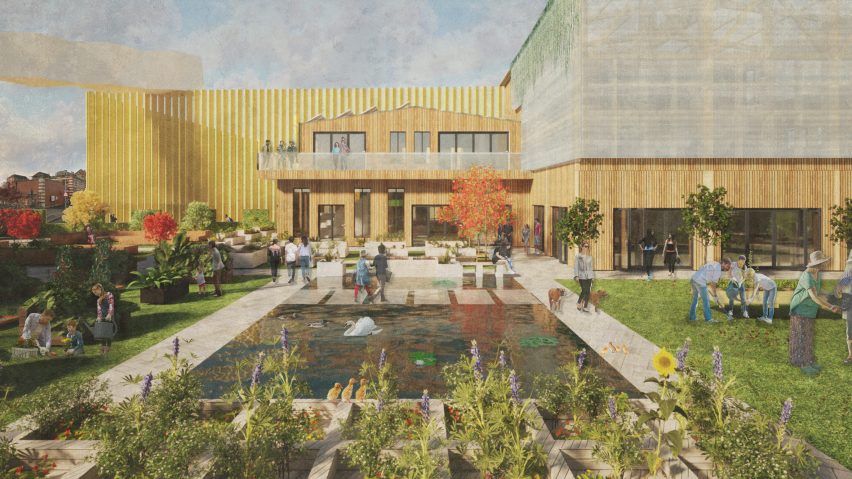
Manchester School of Architecture presents 11 architecture projects
Dezeen School Shows: a research facility for the exploration of possible life forms co-designed with slime and an experiment in drawing and mapping feature in Dezeen's latest school show by students at Manchester School of Architecture.
Also included is a community-focused proposal using allotments and projects focused on cultural heritage and ecologies across Manchester.
Manchester Metropolitan University
School: Manchester School of Architecture
Course: BA Architecture
Course leader: José Ángel Hidalgo Arellano
School statement:
"The BA at Manchester School of Architecture (MSA) equips future architects with a holistic knowledge of the discipline in order to become creative professionals, critical freethinkers and engaged citizens. This year the students' work comes full of surprises, from which this display is a small selection.
"Two new humanities courses have been developed for BA1. Thinking Through Drawing deepens the idea of thinking with the hands and Histories of Architecture displays a complex fabric of histories, as opposed to a traditional linear progression.
"BA2 and BA3 have developed new integration strategies with Technologies and Humanities areas, so Design Studio, being the unit core each year, becomes a real laboratory of techniques and theories. The Climate Action programme runs now through the whole programme, and we appointed a new lead on contemporary practices to deepen our understanding of the role of the practitioner from year one.
"The Skills Programme (tools and methods) and the Advanced Digital Design workshops have become a strong tool in supporting the students' learning experience. We pride ourselves on offering a diverse approach to architecture. This is not just a reflection on Manchester's multicultural ethos, it reflects the breadth of contemporary architecture and the high international profile of the programme."
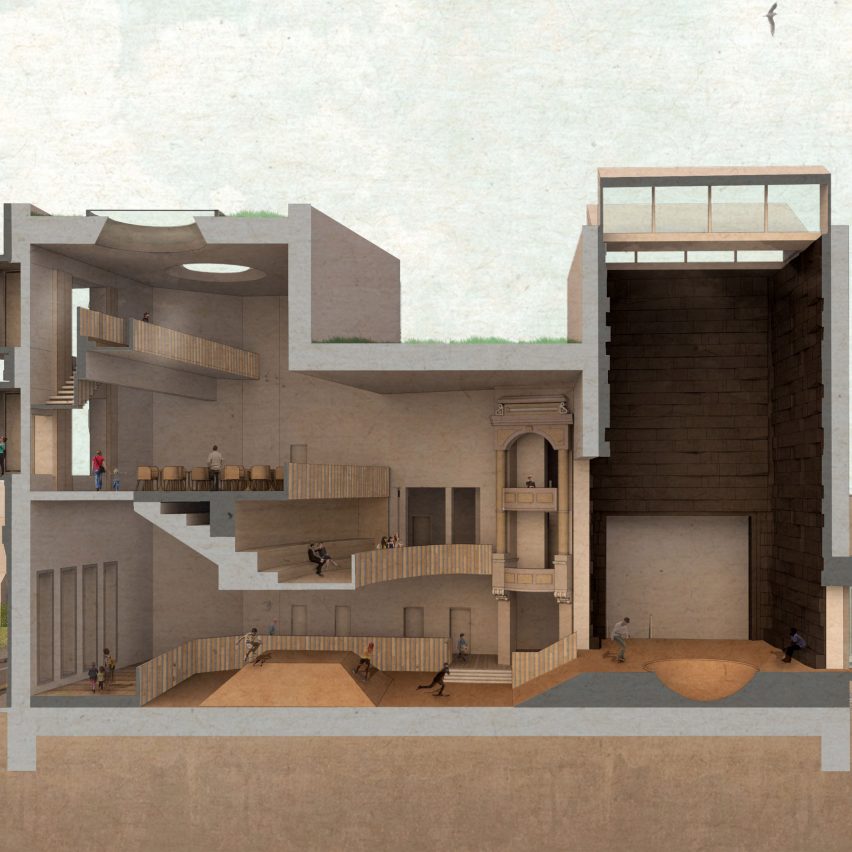
Project Youth Skate by Quan Wei Yap
"Using Take Back the Economy by J.K. Gibson-Graham as a theoretical framework to structure site investigations and demographic analysis, the students collectively mapped everyday examples of networks of alternative community economies, to create Andplan, an urban masterplan for degrowth.
"Burnley Empire Theatre, is an example of community commons located within the Andplan. Using degrowth and alternative economy principles, the students envisioned the theatre as a community asset.
"Sensitively adapting the site, Quan Wei Yap's Project Youth Skate inserts a skatepark to create a node within wider infrastructure networks of alternative youth-focused community economies."
Student: Quan Wei Yap
Course: BA Atelier &rchitecture
Tutors: Dr Victoria Jolley and Curtis Martyn
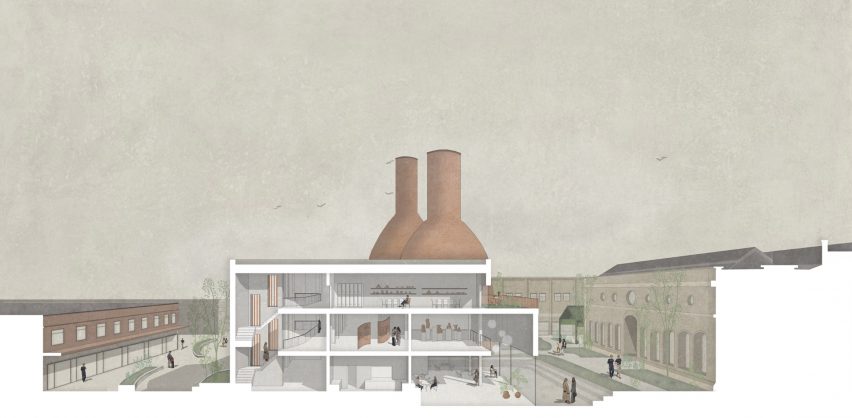
The Kilns of Accrington: An Urban Encounter and Exchange by Fanny Bois-Berlioz
"Students worked on a complex site flanked by Accrington Town Hall, Accrington Market Hall, along with Broadway and Blackburn Road historic high streets. The site, currently utilised as back of house and car parking, has been transformed by students through reuse and new interventions into a place that encourages a convivial coming together of people – an extension, elaboration, or reimagination of the historic high street.
"The Kilns of Accrington: An Urban Encounter and Exchange by Fanny Bois-Berlioz aims to revive the current extension of Accrington's Town Hall by reconnecting with the city's tradition of ceramics with a pottery workshop, an auditorium, studio spaces and an art shop."
Student: Fanny Bois-Berlioz
Course: BA3 Atelier CiA
Tutors: Dr Johnathan Djabarouti and Mike Daniels
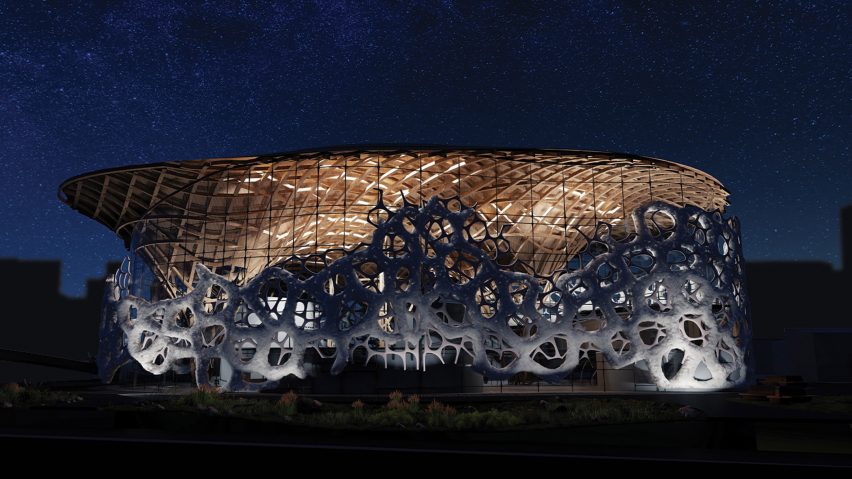
Gut Instinct by Ana Foinau
"The central theme this year was Zero Carbon Futures/Future Growth Shrinkage, to explore future Manchester Metropolitan University campus developments ecologically with wider, city-scale urban systems. The project focused on creating a dynamic and adaptable proposal for the campus.
"Gut Instinct by Ana Foinau aims to reveal the unseen links between the gut microbiome, the microbiome of the built environment and mental health. The proposal examines symbiotic relationships surrounding us, raising awareness of nutrition's impact on mental health as well as environmental concerns.
"The mixed-use building provides research labs, material development and testing workshops, therapy rooms and study spaces, along with recreational areas."
Student: Ana Foinau
Course: BA3 Atelier CPUai
Tutors: Siobhan Barry and Dan Newport
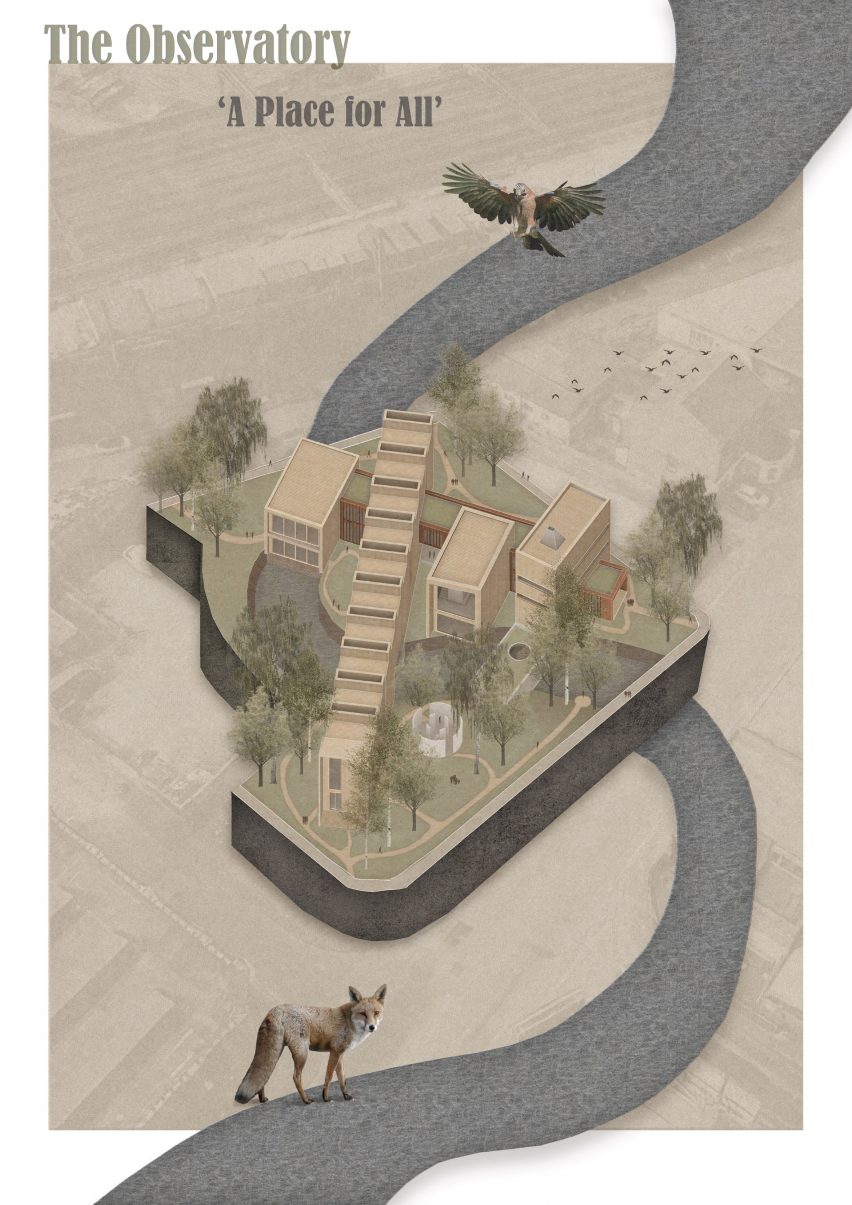
The Observatory: A Place for All by Agne Daugintyte
"This year the students worked in Mayfield area, adjacent to Manchester's central train station. This has been a rare opportunity for students to engage with live briefs, a developer who co-authored the brief, a broad range of built environment professionals and creative practitioners immersed in the transformation of Mayfield, from art, anthropology, archaeology, creative writing, dark-design, fashion, narrative-change, philosophy, photography and psycho-geography.
"In The Observatory by Agne Daugintyte, the building consists of five volumes, four of which are directed towards the River Medlock with one connecting them. Nature grows between the volumes creating a sense of being in the wild. Being surrounded by greenery helps people disconnect from the stressful city life and be in the present moment."
Student: Agne Daugintyte
Course: BA3 Atelier Flux
Tutors: Loris Rossi and Rachel Harris
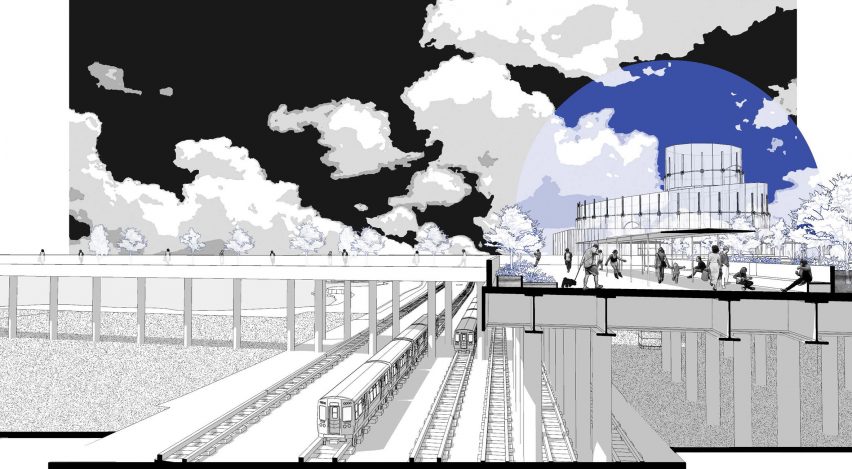
The Nucleus: Along the Barton Railway Line by Ying Yu Chen
"Atelier Infrastructure Space investigates large territorial areas using thematic lenses, often informed by policy, to enable explorations of economies, ecologies, politics, society, culture and their relationship to spatial and material outcomes. In year three we asked students to explore the idea of the Future Pier in the town of Cleethorpes on the Lincolnshire coast.
"The Nucleus: Along the Barton Railway Line by Ying Yu Chen features an elevated multi-use linear park in Cleethorpes, spanning Cleethorpes Station to a new substation, distributing electricity generated by localised renewable energy sources. A dynamic pavilion, The Nucleus, sits above, moving with levels of available energy. This intervention decentralises electrical distribution and increases community ownership of energy sources."
Student: Ying Yu Chen
Course: BA3 Atelier Infrastructure Space
Tutors: Dr Richard Morton and Nicholas Nilsen
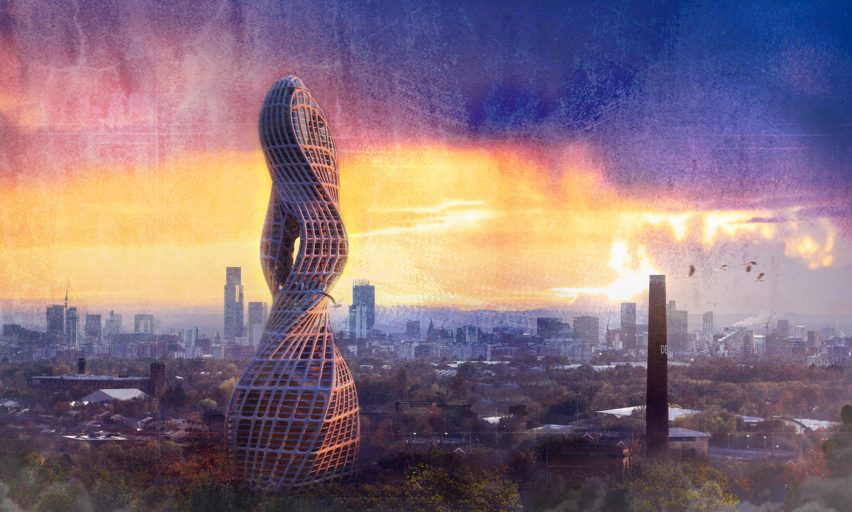
Turritella by Ruxandra-Miruna Neacsu
"Atelier Making employs making as its primary mode of design and research enquiry within architectural design and this connects all projects in the atelier. Experimentation is paramount, through observing, thinking, dreaming, drawing, sketching and crafting, in virtual and real space.
"In BA3, projects began with experimentation in digital and material modelling techniques to uncover opportunities for pavilion and installation-scale architectural designs. These ideas were then developed further, applying design techniques and understandings of material and environmental performance to the high-rise typology, exploring possibilities for the post-pandemic, city-centre workplace.
"Ruxandra-Miruna Neacsu's project Turritella was influenced by the integration of structure and form in the sweeping geometries of shell structures and their fluid interior chambers. This was creatively explored and interrogated initially in application to a pavilion scale-design before being developed in proposals for a new typology of a high-rise, multi-storey workplace."
Student: Ruxandra-Miruna Neacsu
Course: BA3 Atelier Making
Tutors: Vikram Kaushal and Patrick Drewello
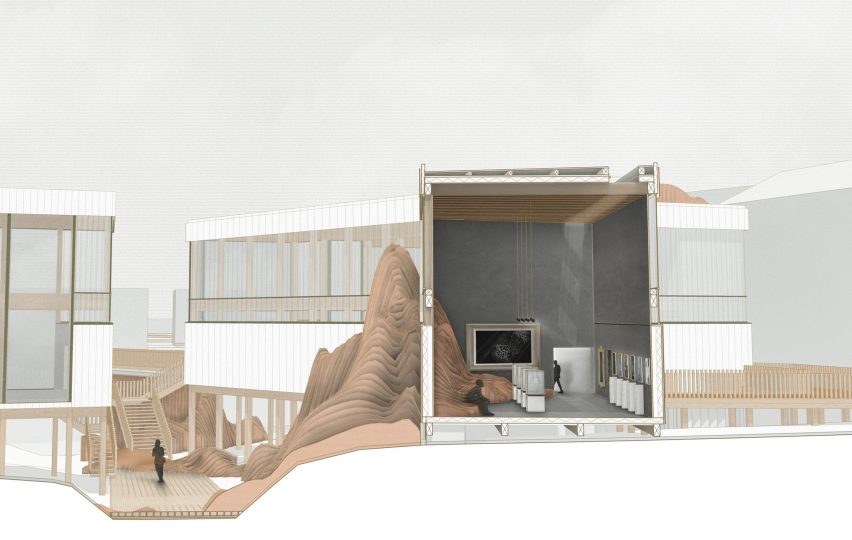
Xeno-Institute by Bradley Foster
"This year, the students focused on territory around Stockport, approximately six miles south of Manchester City Centre, embracing the River Mersey and engaging with the post-industrial heritage of the city. As a studio, we considered the following question as a start of our explorations: How can we reimagine urban environment as an inclusive space for humans and non-humans to thrive?
"In Xeno-Institute, a research facility with a gallery space dedicated to the exploration of unusual life forms on Earth and speculation of possible life forms on other planets, located in Stockport. Physarum Polycephalum (slime mould) was employed as a non-human co-designer and displaying influence derived from its spatial decision-making patterns, physical attributes, and conceptual understanding of the organism."
Student: Bradley Foster
Course: BA3 Atelier SKN
Tutors: Kasia Nawratek and Ian McHugh
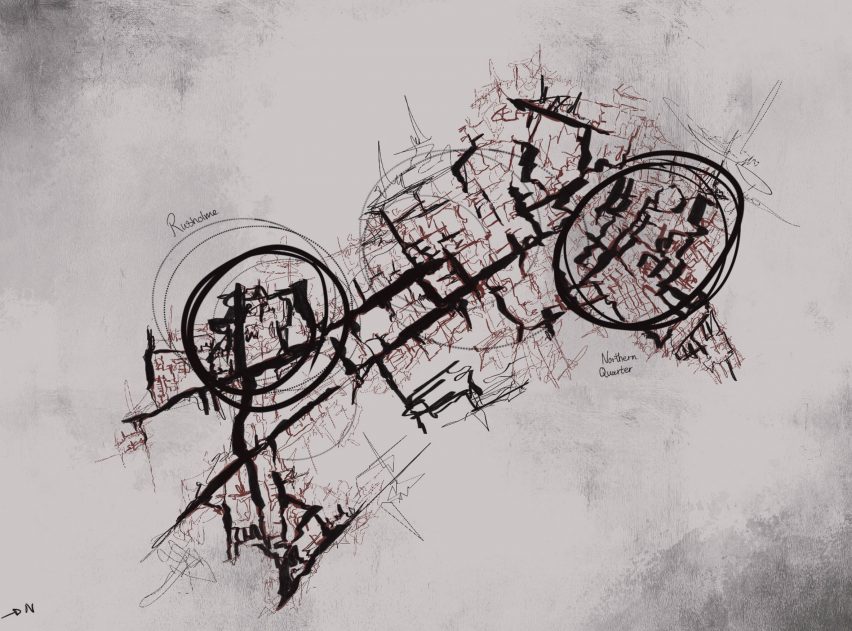
Illustration of a Personal Graphic Language Through Movement Notation by Aaya Abdel-Maksoud
"The project title called Inscribing the City refers to the unique nature of urban representation and presents students with examples of sequential drawings, diagramming, editing and cartography in order to show something specific about the built environment. The assignment asked students to make a map of the city, focusing on an aspect of the urban realm which interests them and considering the best way to represent it.
"With the aim of exploring the identity of Manchester by mapping, Aaya Abdel-Maksoud's piece aims to illustrate a personal graphic language through movement notation. The drawing displays a transitional state of movement, allowing Abdel-Maksoud to view the city as a panorama. Similar to music, the overlay of information (various routes) creates a reality where time is suspended and the network of events is a constant, occurring simultaneously. It allows Abdel-Maksoud as the "idle observer" to explore how the city lives and breathes, making a mental record of the changing yet reoccurring nuances of urban life."
Student: Aaya Abdel Maksoud
Course: BA Humanities – Inscribing the City BA2
Tutors: Ray Lucas, Stephen Walker and Angela Connelly
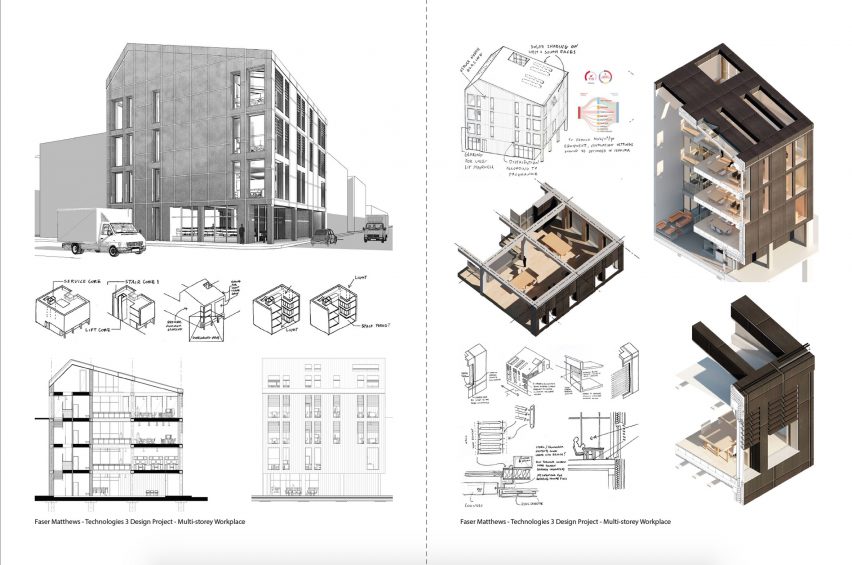
Employing the UN Sustainability Goals and RIBA Sustainable Outcomes to Identify Key Project Drivers by Fraser Matthews
"Design projects in Technologies units at MSA are technologically and environmentally focused, exploring model-making, modelling and digital design and fabrication methods to test sustainability and experiment in spatial effects. Projects begin in first year with triangulated geometries in canopy and pavilion designs.
"In year two, we move into environmental simulation and testing of a single-volume community hall in rural British landscape. In year three, we work globally in urban contexts for a multi-storey workplace brief.
"Fraser Matthews' third-year project employed the UN Sustainability Goals and RIBA Sustainable Outcomes as a framework to identify key design drivers for the project. Long-term use and adaptability drove the initial strategic moves with careful consideration of materiality and construction methods to achieve a cost-effective, sustainable and healthy workplace."
Student: Fraser Matthews
Course: BA Technologies
Tutor: Matt Ault
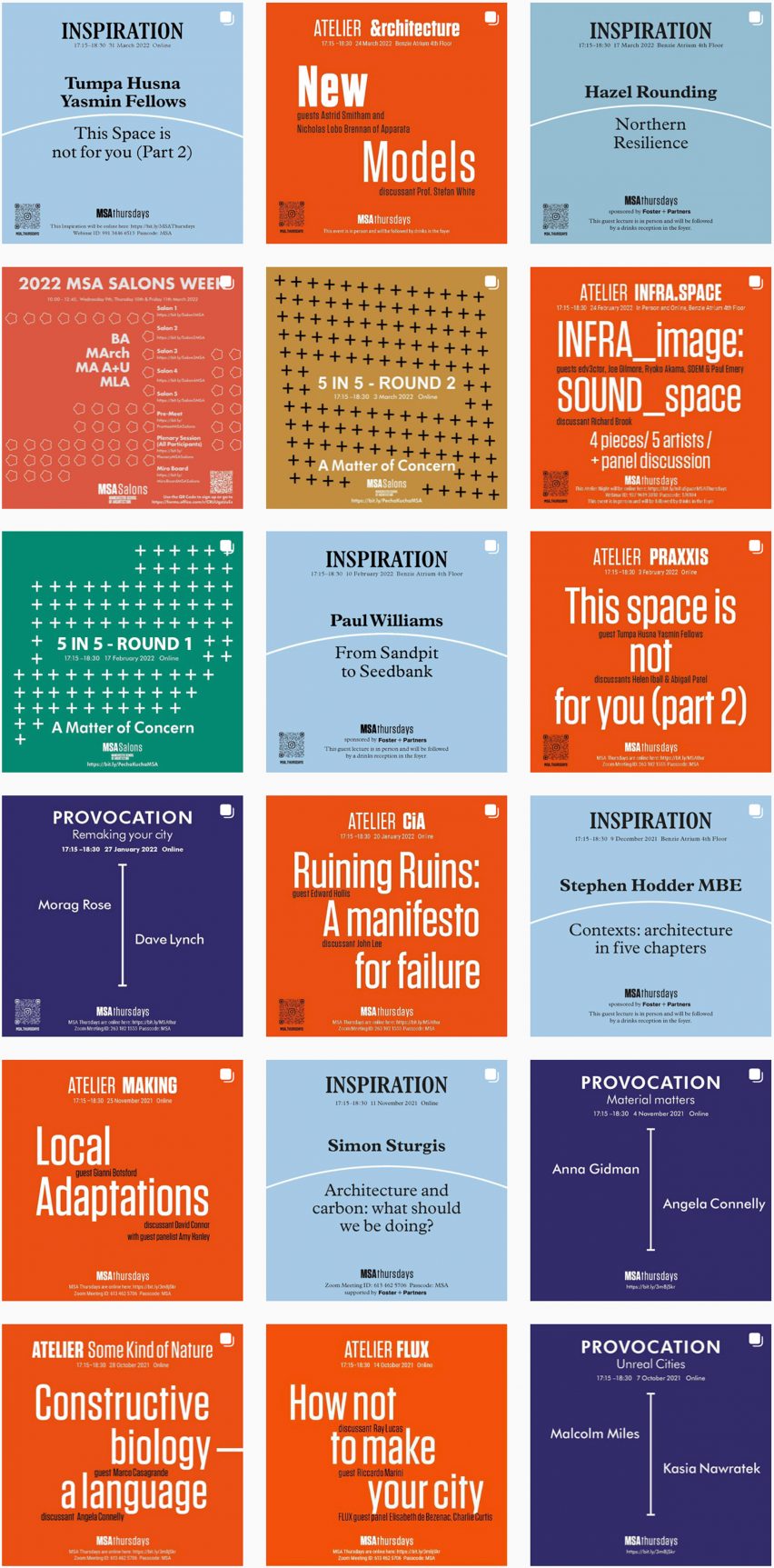
MSA Thursdays by Calin-Bogdan Maier and Benedetta Rizzo
"Hosted by the Manchester School of Architecture, MSA Thursdays consolidates a range of school lecture programmes into a collective and co-ordinated contribution to the life of the school.
"Throughout the teaching year, an ecosystem of events connects students to people, ideas, and debates that support engagement with key issues. A total of 22 events were held, with over 30 invited-guest speakers delivering talks across the year – ranging from renowned practising architects to influential thinkers and innovators in theory, philosophy and sustainability.
"The provocations series retained its format of two short, punchy presentations followed by a longer conversation guided by a discussant. The Salons allowed students to access outside experts and partners with a considerable range of expertise. These included clients, developers, planners, archaeologists, artists, architects and academics."
Students: Calin-Bogdan Maier and Benedetta Rizzo
Course: MSA Thursdays

A Feminist School of Community: External View of the Community Allotment by Lamees Abdul Redha
"Praxxis is a feminist teaching and research atelier in both BA3 and MArch pursuing pedagogy and research within, and through, feminist architectural theory and practice. We ask students to explore feminist strategies and tactics to move our discipline towards a fairer and more equal society.
"This year we have challenged the students to construct their own agenda and develop forms of practice whose aim is not just a building but a tool to transform the social, political and economic conditions of a place by exploring spaces of learning.
"The image by Lamees Abdul Redha portrays the communal aspiration of the allotment, by representing the diversity in users from gardeners to visitors as they interact with a variety of crops and biodiverse elements. These include fruit bushes, sensory plants, lily pads and ducks. Spaces are bridged by paths enhancing visual and physical connections, with the aim of increasing the chances of encounter and conversation between the users."
Student: Lamees Abdul Redha
Course: BA3 Atelier Praxxis
Tutors: Emily Crompton and Roxanne Kanda
Partnership content
This school show is a partnership between Dezeen and Manchester Metropolitan University. Find out more about Dezeen partnership content here.